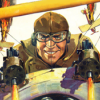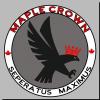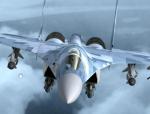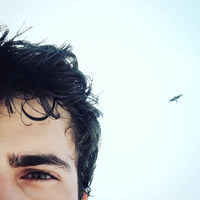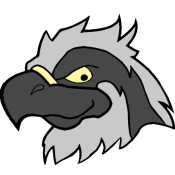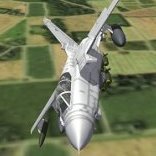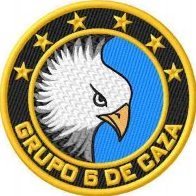Leaderboard
Popular Content
Showing most liked content on 03/26/2018 in all areas
-
3 pointsAhh that old familiar tale you say - of course, in the late 1960s the F-4 Phantom II finally had a gun installed, which meant that everything was better, magical unicorns danced around the sky and the Vietnamese MiGs would fall from the sky in droves! Okay so that didn’t quite happen….......what did? Note - These articles are a compacted summary of a rather massive topic and will discuss the F-4 and Guns in Vietnam mostly ignoring missiles. Vietnam will be used instead of SEA. And USN includes the US Marines for simplicity. Very different F-4s and Air Forces (USAF v USN) Firstly, with different equipment, ideas and ways of doing things the United States pretty much had different Air Forces in the US Navy (USN) and the US Air Force (USAF), so it is important to draw a big red line between them with a quick summary: US Navy F-4 Versions in Vietnam F-4B (F4H-1) – Second F-4 version but first major production version of the F-4. F-4J - Improved F-4B Major Differences compared to the USAF Air to Air Refueling with Drogue and Basket Use of AIM-9B/D/G/H versions of Sidewinder only as Short Range Missile. Never fitted Guns, and only rare use of the MK4 gun pod (mostly Air to Ground use). Internal ECM equipment. Different Radars (AN/APQ-72, -59 & AWG-10 Pulse Doppler) Had no flight controls in the back seat In 1972 preferred used of AIM-9G/H Sidewinder over AIM-7E-2 Sparrow Used more flexible Loose Deuce A-A formation tactics Carrier and land based (Marines) USN F-4J refueling drogue and chute style (USN) USAF F-4 Versions in Vietnam F-4C (F-110A) – Based on the F-4B with USAF changes. F-4D – Improved F-4C. F-4E – This is the (only) F-4 with the internal Gun. Major Differences compared to the US Navy Air to Air Refueling with Boom Used AIM-9B/E/J versions of Sidewinder Used AIM-4D Falcon for periods over the AIM-9 on F-4D/E External Podded ECM equipment Different Radars (AN/APQ-100, -109 & -120 ) Use of Gun Pods (SUU-16 & SUU-23) Had some flight controls in the back seat In 1972 preferred use of AIM-7E-2 Sparrow over AIM-9 / AIM-4 Insisted on sticking to the obsolete / useless fluid four (Welded Wing) A-A formation tactics right to the end. USAF F-4 nears the boom of a KC-135 in 1967 (USAF) Why no gun on the F-4 to start with? On the 18th September 1947 the United States Army Air Force (USAAF) became the USAF and with the limited budget constraints after WWII, Strategic Air Command (SAC) was seen as security priority and was thus given the major funding over the Tactical Air Forces (TAF). SAC culture dominated the USAF in the early years along with its doctrine of strategic nuclear bombing with massive manned bombers. Tactical Fighters (F-100/F-101 etc) under this emphasis on SAC now had two roles: Defend against enemy bombers as interceptors. (Air Defence Command / ADC) Low level delivery of tactical Nukes. (Tactical Air Forces / TAF) Apparently, Korea never happened because by the late 1950s bombing a target in a fighter within 750ft was more then good enough (with a Nuclear weapon) so not only conventional Air to Air training went out the window but also conventional bombing! One Air Force general noted about this period, General (Curtiss) LeMay had deliberately loaded the Air Staff with bomber guys, who were not well acquainted with things like air superiority or air-to-air combat, and who wanted to destroy enemy aircraft on their airfields. In 1957, LeMay actually tried to eliminate the TAF, but the possibility of the Army developing its tactical air support arm overrode this idea, and later that year LeMay reluctantly gave the TAF more funds to keep its mission from being turned over to the Army. Who needs fighters anyway? - the B-36 Peacemaker takes its toddler son for a walk in 1948 (USAF) Some of this thinking was perhaps driving the US Navy with their F4 program in the 1950s. The USN had a requirement to intercept Soviet bombers attacking the fleet above 50,000ft out of the range of gun armed fighters and thus from 1956 the AIM-7 Sparrow III was to be the primary weapon with a gun as secondary. By 1957 however the gun was deleted from the design because the new AIM-9 Sidewinder was to be the secondary weapon. Feeling in the USAF really was in some respects that the day of the gun had past, working at the Pentagon in Air Force Operations as a colonel in the early 1960s, Maj Gen Richard Catledge recounted his Pentagon experience with the antigun sentiment and General Momyer: I realized this two-star, General “Spike” Momyer[,] ran the Air Staff—very strongminded individual, very knowledgeable individual, who did his homework on everything. . . . It was his belief and his concept that future airplanes would not have guns in them. There was no need for guns. I couldn’t believe this when I came across it in the Pentagon. So I built a flip chart briefing, with my convictions, why we needed guns, more for air-to-air than for air-to-ground. . . . Anyway, I found it was an uphill fight. That every colonel, every major, in requirements, whose business I was getting into, believed as their boss did. So I really went uphill. I built my chart, got my ducks all lined up, and went to my boss, [Major General] Jamie Gough, and gave him that briefing. He said, “Well, it’s a good story, . . . [but] you are going to have to run this by Spike Momyer, and I’m not going with you.” . . . So I went up, got the appointment, put my stand in front of his [Momyer’s] desk, and started in telling him why we needed guns in airplanes. Well at one point in this—he stopped me several times and gave me a few words on why we did not, and [that] essentially missiles had taken over. Missiles had taken over for air-to-air . . . and other kinds of munitions [had taken over] for air-to-ground, so there really was no need [for obsolete guns]. Well, I thought I had a pretty good argument, but didn’t convince him. I remember he’d beat on his table and say, “There will be a gun in the F-4 over my dead body.” That was his attitude. Seems strange that despite the many limitations of missiles then, such as they couldn't be used at the close ranges guns were used at, and they had no way to ID aircraft Beyond Visual Range makes it look at if Momyer was towing a party agenda for flashy new technology. [Even if the technology was crap] The USAF took on the F-4 as part of Defense Secretary Robert McNamara’s drive to get the services to use standard equipment with commonality. He was also interested in the conventional side of things and saw both the A-G potential as well as the A-A potential and thus the USAF received the F-4C (originally designated F-110A). (Note: yes this was potentially one of the few things McNamara did that wasn’t a complete catastrophe!) Of course, the F-4 wasn’t the only aircraft of its time without an internal gun (another reason seen given is that pilots would never have closed to gun range to take down a bomber carrying Nukes.) Some other Interceptors of the era born with no internal Gun: F-102 Delta Dagger F-106 Delta Dart (Some later got a gun under project Six Shooter from around 1969) Su-9/11 Fishpot Tu-128 Fiddler Su-15 Flagon MiG-25 Foxbat Some Interceptors that had the gun removed: Lightning Fmk3 CF-104 Starfighter (Early) A gun was later incorporated MiG-17PFU Fresco MiG-19PM Farmer MiG-21PF/PFL/PFS/PFM/FL (PFL and PFM used by the VPAF in Vietnam along with the gun armed F-13 and MF) F-102A Delta Dagger interceptors (USAF) Getting a gun on the F-4E McDonnell first proposed an internal gun for the F-4 in 1961 however it wasn’t until a potential limited war in Vietnam looked likely in 1963 that this was taken more seriously by the military for Ground Attack / strafing. By 1965 combat experience determined that a gun was a requirement and it was trialed in the F-4, and thus the F-4E was born with a nose job and new APQ-120 Radar: This shows the 22 modules (Line Replaceable Units / LRUs) required for the APQ-120 radar Adding the gun solved all the problems yes? The original gun muzzle caused a few problems. Firstly gas ingestion into the engine inlets caused engine flameouts and secondly it made a loud whistling noise that apparently notified the enemy troops (and their Dogs presumably ) long before the F-4 got there. The muzzle had to be redesigned and the later F-4Es have a longer gun muzzle under the nose. Also not shown in the diagram above, the gun assembly and ammo drum took up a lot of space in the nose and the dish/antenna size was reduced. The Westinghouse APQ-120 was an early ‘Solid State’ radar (derived from the APQ-109) and being Solid State must have helped in reducing the obvious vibration issue when you have a massive Gatling gun sitting next to 1960s electronics! Despite this it still exceeded the reliability requirements and was similar in that regards to the F-4D radar that had no gun in the nose. Ex F-4 flyer Walt BJ stated that the APQ-120 in the F-4E had about 20-25% less range over the APQ-109 in the F-4D. Didn’t the F-4E just wipe the floor now it had a gun? During Operation Linebacker I & II (1972/73): The USAF F-4E had 22 claims in 25 (known) engagements including 7 gun kills The USAF F-4D had 27 claims in 30 (known) engagements with no gun kills So firstly, if you add an internal gun but still don’t train anyone to use it then despite any figures nothing really changes. Secondly the missiles and radars had improved since 1965 regarding close in capability and so the Gun was starting to look very secondary by now. Considering the extra effort required for guns in skill, fuel, risk of collision, and making themselves more vulnerable, a missile would be the priority weapon regardless of the USAF training issues. What about the gun pods? Stop gap measures meant some squads using the 20mm SUU-16 and SUU-23 Gatling gun pods on the F-4C and D respectively – however despite some success these were somewhat inaccurate and the extra drag had a noticeable effect on range. Looking happy to be here - SUU-23 Gun pod on the center line station of an F-4 (Clive Camm) Some championed the Gun pod such as Korean war ace Col Frederik “Boots” Blesse after it became a useful strafing tool for South Vietnam sorties. USAF Col Robin Olds was a tad less enthusiastic: The gun pod wasn’t so much a speed penalty as an object of increased drag and fuel consumption. But that wasn’t my objection to the gun pod, I refused to carry it for 3 basic reasons; It took the place of five or six 750 lb bombs. Only my older and more experienced fighter pilots had ever been trained in aerial gunnery, to say nothing of air-to-air fighting. There were perhaps a dozen of them in the 8th TFW. I had no intention of giving any of my young pilots the temptation to go charging off to engage MiG-17s with a gun. They would have been eaten alive. Instead they fought MiGs the way I taught them and did so with notable success. The US Navy briefly trialed and used the 20mm MK4 (GAU-4) Gatling gun pod mostly for A-G but this was determined to be useless in operation with technical difficulties and also meant the preferred configuration of centre line drop tank only could not be carried. The not so successful MK4 (GAU-4) gun pod at China Lake (Dave Woolsey) Did the Navy not want an internal or any gun? For the primary purpose of fleet air defense, ‘missiles only’ it seems was deemed adequate. When in combat over Vietnam some Navy pilots wanted it and others didn’t. The gun pod was not persevered with and even an offer of free SUU-16/23 pods from the USAF was turned down on one occasion. We can deduce that if you reshaped the F-4J nose like the F-4E then you also have to reduce the radar dish size and forfeit range which might not be the best idea regarding fleet defense. Simply plonking in the APQ-120 with less range and no useful lookdown/shootdown capability was probably not going to win USN favour. Even spending the money on a modified APG-59/AWG-10 still gets you reduced range at the end of it. The APG-59/AWG-10 in the F-4J had some good lookdown techniques (for its time) and was considered superior. However even without the gun the F-4B/J Phantom avionics suffered from heavy carrier landings: I had a USN F4J pilot in my back seat one night gunship escort mission (can't for the life of me remember why) and he marvelled at the radar pickup. I asked him why he thought it was so good when he was flying the J model. He told me after about 4 'standard' carrier landings the radar wasn't so hot anymore. (Walt BJ) So, what did the Pilots say about Guns, Training, and Back Seat Drivers During the Vietnam conflict a Secret project (Red Baron) took place which compiled every A-A engagement fought. As part of that the aircrews were interviewed where available, giving quite a mixed view. 3 April 1965 F-4B USN front seat pilot (with 1000 hours) There is a need for a close in weapon as a backup on any mission……………….Guns would also be useful as an air-ground weapon (stopping a truck convoy, for example) 10 July 1965 USAF F-4C front seat pilot Gun not necessary; it will get people into trouble. Would like capability to fire all missiles on the F-4 with Centreline Tank on. Less minimum range for missiles instead of guns…….Because lack of ACT at time of event, did not know how to manoeuvre the F-4 as well as he could later after some experience. 6 Oct 1965 USN F-4B front seat pilot Fighter needs guns or short range missile……………..Turning and acceleration rate of MiG-17 was impressive. The MiG leader was aggressive and a good fighter pilot. 23 April 1966 USAF F-4C front seat pilot Improve the performance of the AAM and the gun will not be needed…………Training safety restrictions severely limited air-combat-tactics training prior to deployment to the combat area. 23 April 1966 USAF F-4C front seat pilot The need for a F-4 gun is overstated, although it would be of value if it could be obtained without hurting current radar and other system performance. If you are in a position to fire guns, you have made some mistake. Why after a mistake would a gun solve all problems. Also having a gun would require proficiency at firing, extra training etc. Have enough problems staying proficient in current systems. If the F-4 had guns, we would have lost a lot more, since once a gun dual starts the F-4 is at a disadvantage against the MiG. 23 April 1966 USAF F-4C front seat pilot Felt that he had very poor air-combat-tactics background. Prior background was bomber and other multi-engine. Transition to F-4 oriented toward upgrading a qualified fighter pilot rather than training a pilot with no fighter background. 25 April 1966 USAF F-4C back seat pilot Gun is not particularly desirable, if the performance of the aircraft is degraded by an external installation. Also, one might make the mistake of getting into a turning battle if a gun was available 25 April 1966 USAF F-4C back seat pilot Capability of the F-4 is being wasted by having a pilot in the back seat. The pilot is not adequately trained as a radar observer. Need a radar expert in the back seat. The pilot back seaters main goal is to be upgraded to the front seat rather than master the radar. 26 April 1966 USAF F-4C front pilot It is a fallacy to say that you can bring the F-4C home and land it solely from the back seat. You’ve got to blow the gear down and then there is no antiskid system; there is no drag chute handle; there is no fuel gauges or switches; you may be limited to using internal fuel; you can’t dump fuel or jettison tanks. A gun would be nice in an F-4C as long as it was clearly understood it was only a weapon of last resort. Soviet fighters are more capable than US aircraft inside gun range. 29 April 1966 USAF F-4C back seat pilot It was not necessary to have a pilot in the back seat of the F-4 except during night A-G missions when a pilot may more capably advise the aircraft commander. Actually, a radar officer would be more interested in the back-seat operation than a pilot would be. 29 April 1966 USAF F-4C front seat pilot It would be undesirable and possibly fatal for an F-4 to use a gun in fighting with a MiG because the MiG is built to fight with guns and the F-4 is not. 30 April 1966 USAF F-4C front seat pilot Training was not really adequate for this engagement, didn’t know what the back should do in a hassle such as this. 14 June 1966 USN front seat pilot Guns would be most useful for the ResCAP role but not particularly valuable in the air to air role. An F-4B from VF-111 Sundowners giving it some - just because (USN) The F-4 Phantom II Dogfighter? As we know the F-4 was not particularly the most agile fighter in theatre and turning at a slower speed was a bit of a problem. However, US fighters had seldom been the best turners in previous conflicts such as WWII (think F-6F Hellcat V Zero) ……power and speed could make up for it and were often better attributes to have. In 1966 the US Navy flew “Project Plan” flying the F-4B against a series of fighters to determine how good it was in an Air Superiority role. It concluded that contrary to what F-4 pilots thought the F-4 was the best air to air fighter in the world (including the F-8), if the F-4 stayed fast. To fly the F-4 however in BFM/ACM you needed to have training and a lot of experience (like most jets of this era). One particular characteristic of the hard-winged F-4 was “Adverse Yaw” at slower speeds where the pilot had to make the turn using rudder pedals instead of the stick. If the stick was used the chances of departing were very high – somewhat fatal in combat. Now stick a pilot in the cockpit with little training and you can see that in the heat of battle adverse yaw becomes quite serious (not just A-A but avoiding SAMs etc). Of course, pilots just simply avoided going anywhere near adverse yaw if they could however that meant they could never max perform the jet if they needed to in every situation. Adverse Yaw was all but eliminated by adding leading edge slats to the F-4E with the 556 "Rivet Haste" Mod late 1972. Too late to have any real relevance for Vietnam though. In Part 2 we look at the very different training aspects of the USN/USAF/VPAF, the F-105 / F-8 paradox and the myth / legend of Colonel Tomb.
-
3 points
-
3 points
-
2 pointsRavenclaw_007's Mk4. rocket launchers and AN-M64 bombs "slicked out".............................Weaponearing at its finest! Can't wait!!!!!
-
2 pointsMcDonnell Douglas Phantom FGR.5 - No.6 and No.41 Squadrons, RAF Strike Command, 1976 The cancellation of the Hawker P.1154 in 1964 quickly led to the adoption of the LTV F-8E(RN) Crusader for the Royal Navy to replace the Scimitar and Sea Vixen and the adoption of the McDonnell Douglas Phantom for the RAF to replace the Hunter. However, anxious to improve the UK's trade balance with the US, the UK Government insisted that the RAF's Phantoms would adopt either the Rolls Royce Spey turbofan or the Anglo-French Rolls Royce/SNECMA Sequanna turbofan then under development for the proposed Mirage IVB and advanced Mirage III aircraft. The Sequanna was quickly chosen being lighter and slimmer than the Spey and fitted the F-4 like a glove whilst producing about 1,000lbs more thrust per engine than the stock J79-GE-15 turbojet but with a lower specific fuel consumption. First flown in 1965 and entering service with the RAF in 1966 the Phantom F.1 supplemented the Lightning interceptors of RAF Fighter Command whilst the Phantom FG.2 re-equipped many Hunter and Canberra squadrons at home and abroad. The FR.3 was a planned version of the RF-4C that failed to materialise as the RAF adopted podded recconnaisance pods but the FGR.4 was the RAF's first true multi-role version of the Phantom taking advantage of the new F-4E airframe and a more powerful Sequanna RB.390 engine developing 19,000lbs with reheat. Only 50 FGR.4's were built before production switched to the FGR.5 with Sequanna RB.392 engines, slatted wings and more advanced avionics. The FGR.5's served at home and abroad, most notably with RAF Strike Command and RAF South East Asia Command before finally being retired in 2003.
-
2 points
-
2 points
-
2 pointsConcerning the spent cartridge ammo chutes, Mike Dora got a reply from an associate at The Vintage Aviator: “The spent cartridges on German lanes like the Albatros were expelled through a downward chute or tube that exited the bottom of the fuselage. The German V strutters like the Albatros did suffer from “flutter”. This was identified many years later when the phenomenon of “flutter” was actually understood. The case that exemplifies this is that of an Albatros crash, the Pilot was Von Hippel and the lower wings separated (suspected to be because of flutter) and he managed to crash land the rest of the plane some distance from the lower wings and lived to tell about it. The Nieuports were much stronger and could handle much higher g loads. The issue of flutter is not always directly related to G loading but is an aeroelastic effect that depends on the structure, the material and the geometry of the aircraft and also its resonance, for example the flutter event can be started by flying through another aircraft wake or simply flying through turbulence. There are also a number of other ways to “excite “ the aircraft structure and start the flutter event….. There is also the sheer structural strength or lack of it inherent in V strut designs I don’t have enough scientific data to comment on this and I certainly haven’t flown many aircraft to their structural limit to test it ! I would suggest researching flutter a bit more and use that for your comparison.” Mike: It is _very_ interesting that Gene advises that the Nieuports were _stronger_. From my previous research, the Nieuport design was alleged to have exacerbated the aeroelastic effect (and perhaps the flutter effect?) by having a non-rigid lower-wing attachment point for the V-struts, in effect a loop through which the lower-wing spar was free to rotate. Or - thinks - perhaps this arrangement actually _alleviated_ the negative effects, by allowing that spar to twist temporarily without breaking anything? Looks like we may have to reconsider all those lower wing MaxG settings for the Nieups. I did find it a bit hard to understand how eg Guynemer, Nungessor, Bishop (well the first two at least) were so successful with a design that was allegedly prone to fall apart? Jeanba had some excellent comments about aeroelasticity: This is the old discussion stiff vs soft. Both designs have their pro and co but none is really superior unlike what was "believed" in the years 50-60, where planes were usually designed as "stiff" As a lot of aircraft literature roots back to those years, this misconception is still widely spread among "amateurs". Most of the time, flutter is the result of a combination of very fast change from "stiff" to "soft" and concentrated masses Paradoxically, the failure of the French to produce good two-seaters in the years 1916-1917 (until the Breguet and Salmson say) was indeed due to the belief by Dorand that to be resistant, the structure had to be very stiff "everywhere", this resulted in too heavy structures. Boeing was one of the first aircraft companies to really exploit aeroelasticity, when they introduced the B-47, B-52, and 707 in the early/mid 1950s. A great deal of weight was saved by designing wings that would flex under load, rather than traditional wings that were stiff but heavy.
-
2 points
-
1 pointVought F-8E Crusader - 727 Eskadrille, Royal Danish Air Force, 1967 During 1955 the Royal Danish Air Force (RDAF) were looking to replace their F-84 Thunderjets from about 1958 and by early 1956 had settled on the North American F-100D Super Sabre. However, the RDAF became increasingly alarmed at the high attrition rate of the F-100 in USAF service and with the Hawker Hunter now reaching maturity they decided to buy more Hunters to replace the elderly F-84 Thunderjets and look for a more modern fighter with a slightly later service date of 1962. Competing against the BAC Lightning, Dassault Mirage III and the Lockheed Starfighter, Vought initially offered a version of the Crusader F8U-2N (F-8D) but by mid-1959 were able to offer a planned multi-role development of the Crusader with a more powerful Magnavox APQ-94 radar and air-to-ground capability. Initially known as the F-8U2NE this later became known as the F-8E and the Danish government became the first Crusader export customer when it signed up for 50 F-8E's in late 1959 for delivery in early 1962. The Crusader entered service with 727 Eskadrille and 730 Eskadrille based at Skrystrup and later followed by 725 Eskadrille based at Karup. From about 1964 the RDAF adopted an overall 'NATO Green' finish and the types popularity saw the Danish government place further orders for 48 of a more advanced version of the F-8E with further improvements in avionics including the Magnavox APQ-124 radar and the uprated J-57 P-20D engine plus 16 multi-sensor recconnaisance aircraft. Designated F-8E(D) and RF-8E(D) these advanced Crusaders were the last new-build Crusaders ever made and killed off any hopes of Sweden selling the SAAB Draken to Denmark. In the mid-1970's the remaining 41 F-8E's were refurbished by SABCA of Belgium and brought up to a standard almost equivalent to the F-8E(D) and the type served until the late-1980's when replaced by F-16C's.
-
1 point
-
1 point
Version 1.0.0
53 downloads
Hi to all, I'm Astore. Thanks for downloading my skin pack ! The UPEO (Universal Peace Enforcement Organization) is a fictional faction featured in the Ace Combat game series, and the main faction of Ace Combat 3 Electrosphere. The Universal Peace Enforcement Organization is an international peacekeeping organization under the Neo United Nations. UPEO maintains the SARF (Special Armed Response Force) when military intervention is required for peacekeeping duties, as well as the Euro-Asia Public Network for neutral, continent-wide broadcasting. Despite its aim of enforcing peace, UPEO was a puppet of General Resource Limited until the late 2030s. The organization became more independent with the rise of Neucom Incorporated and with Gabriel William Clarkson taking office as UPEO's representative. UPEO is the player's initial organization at the start of Ace Combat 3: Electrosphere. In the Japanese version of the game, the player can defect from UPEO to either General Resource or Neucom. It has shown that their equipment is of two main aircraft carriers, a Nimitz class and an Air Vector UI-4053 Sphyrna, still in construction during the early events of the game. Their main base, is a military airport at the center of Expo City, the eastern city of the USEA continent excluding Megafloat, which is a floating-island city. The UPEO Air Fleet is composed by future versions of actual aircraft and some fictionals since the game is set in 2040 of the Strangereal Universe, but the only fictional continent invented at the game exit was the USEA, so, since the faction seems to be universal, there could be several other planes operative in other nations, which have been introduced only in Ace Combat 5 The Unsung War (That is set in 2015). Main air fleet EF-2000 Typhoon II -Base plane, multirole fighter- Mig-33 Fulcrum SS -Interceptors- F/A-18 Hornet ADV -Multirole, got from the General Resource LDT faction F-16XF Gyrfalcon -Air superiority, got from the General Resource LDT faction R-101U Delphinus I -Base plane of the R Fleet from Neucom.Inc faction R-201U Asterozoa -Heavy attacker fighter, Attacker from the R Fleet of the Neucom.Inc Faction SU-37 SUPERFLANKER II -Multirole, mainly Air Supremacy.- SU-43 Berkut -Multirole, mainly Air Supremacy.- UI-4053 Sphyrna - Heavy Air vector with the fuction of a flying aircraft carrier with jamming capabilities and interior hangar to store at least 20 planes. R-505U -Presidential plane of Rapresentative Gabriel William Clarkson Aces: [From Ace Combat 3] -2040- Erich Jager Fiona Chris Fitzgerald Rena Hirose Nemo [From other continents] -...- Unknown [From original SF2 Campaigns and missions] Aurelia-Astore Squadron-(F-35C Lightning assignated to the CVN-56 Aircraft Carrier)-2025- ___________________________________________________________________________________________ Skin Pack: F-15 D ACTIVE -UPEO and GR Skins- F-16A_Blk1 (Stock F-16) -UPEO skin- FA-18a (Stock F-18) -UPEO skin- FA-27C (Yukikaze Planes Addon) -UPEO and NEU Skins- Mig-29C_RUS -UPEO Skin- Su-27SKM -UPEO and Upeo Ace Rena Hirose Skins- SU-47 -UPEO Skin- Typhoon -UPEO Skin and Typhoon ace skin- CVN-56 / Admiral 56 (Yukikaze Aircraft Carrier Addon) -UPEO Skin- Installation: Open the aircraft folder from the downloaded content, and copy/move the UPEO (and variant) folders to the plane's folder in your SF2 (StrikeFighters2>Objects>Aircraft>Your plane folder. Same for the Aircraft Carrier skin: StrikeFighters2>Objects>GroundObjects>Admiral56) There's no need to overwrite on other folders, just add them in the specific folders. My skins does not requires decals, since the emblems are painted in the skin. If the skin doesn't work or shows leaving your aircraft black, it's possible that you are using a different version of the plane from an another addon, or that your game doesn't read the skin format. When this happen, copy the skin files to save them, then try to change their format (Like JPG). If the skin sets are the same for other models with the same skin mapping, they should work too. You can make a UPEO Nation in your INI Files continuing the list of nations. Be sure that the Nation number continues the series. In my case since I already got 271 Nations in my file, I've wrote Nation272 to make it work. But you could have to change the number. [Nation272] Name=UPEO DisplayName=UPEO Alignment=FRIENDLY PilotNameList=NamesUSN.lst RankList=RanksUSAF.lst CallsignList=CallsignsUS.lst Formation.Fighter=USFighter Formation.Attack=USFighter Formation.Bomber=USBomber Formation.Transport=USBomber Formation.Tank=USTank Formation.MobileAD=USAD PilotTrainingStandard=NORMAL GenderRatio=0 DebriefSuccessMusic=DebriefSuccess.wav DebriefFailMusic=DebriefFail.wav DebriefKilledMusic=DebriefKilled.wav SpeechFile=USAFSpeech.cat SpeechTextFile=USAFSpeechText.str Link to planes and models: F-16: http://www.fxinteractive.com/it/p156/p156extras.htm F-18:http://www.fxinteractive.com/it/p156/p156extras.htm OR https://combatace.com/files/file/16682-fa-18a-made-by-tmf-themiragefactory/ Typhoon: https://combatace.com/files/file/6398-ef-2000/ F-15 D Active: https://combatace.com/files/file/7256-f-15-active-for-the-thirdwire-series/ F/A-27C and CVN-56 from Yukikaze: https://combatace.com/files/file/12522-yukikaze-fa-27cadmiral56/ SU-27 SKM: https://combatace.com/files/file/14316-su-27skm-flanker-for-sf1woe/ SU-47: https://combatace.com/files/file/14312-su-47-berkut-for-woe-sf1/ MIG-29C: https://combatace.com/files/file/13792-mig29c-ukrainerar/ Most of these planes should work also on SF Gold. I've started working on the skin pack from Gold and then moved to SF2. Actually, also the F-18 has been downloaded from the FX Interactive site, but the addon from CombatAce should work too. To install manually the aircraft from that site, download them, the site will give a laucher-sort file. Ignore it, do mouse-right click and extract the files. You should obtain the aircraft folder to put in your SFG/SF2 aircraft folder, and it should work. Some of the templates for aircrafts were missing, then I had to make some new by hand, like for the F-15D Active. The older skins could be not at the same quality since I was working on SFG, but they'll be remade in future. Bugs and errors: The files shouldn't damage your game, if something doesn't work just remove the folder of the skin. The only bug I actually know is in the F-15 D ACTIVE canards, which couldn't be painted. It was the only Active I found, if you use it in SF2 be sure to insert also a cockpit file. You can customize the skins if you want to, credit me when you post screens or other in way to allow other players to find the download. Don't forget to rate, good or bad. This was my first skin pack, I hope I didn't messed up and that everything works. Maybe I'll do other skins in future. Have fun ! -
This post cannot be displayed because it is in a password protected forum. Enter Password
-
1 pointMust agree, bro. It's fantastic community that have really large knowledge base . You can learn almost everything about 3d modelling, aerofoils, history and much, much more. Never saw so many, so good informed ppl in 1 place before.
-
1 point
-
1 pointAt the moment you are to sell, lets take me an example a Volkswagen Golf 1 as Golf 6, and say, sorry that he does not looks like in reality. And this is pity. There are a lot of argentian modders who used the fake pilot to make planes appearance fitting to reality. A lot of Mirage versions they made. And they are very good. Perhaps you could ask them to make some fake pilots to make that your MiG-35 looks more like a real MiG-35. I'm sure, that they will help you, if you ask them. When i ask for help to modify the MiG-21 in a fictional carrier based MiG-21K, i got help from there. A real MiG-35 would be very welcome here, i think.
-
1 point
-
1 pointHe gets the Mig-29K avaible here, he changes a few things and then..... Oh!!! We have a new aircraft!!! Wtf!!!!!
-
1 pointGot a whale of a tale to tell ya, lads A whale of a tale or two 'Bout the flapping fish and girls I've loved On nights like this with the moon above A whale of a tale and it's all true, I swear by my tatoo
-
1 point
Important Information
By using this site, you agree to our Terms of Use, Privacy Policy, and We have placed cookies on your device to help make this website better. You can adjust your cookie settings, otherwise we'll assume you're okay to continue..

